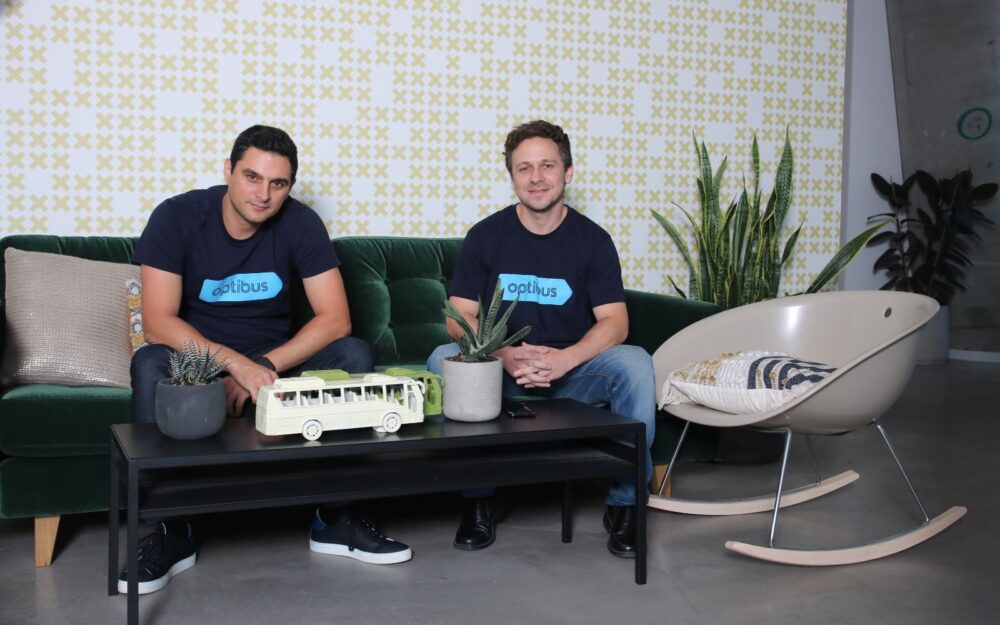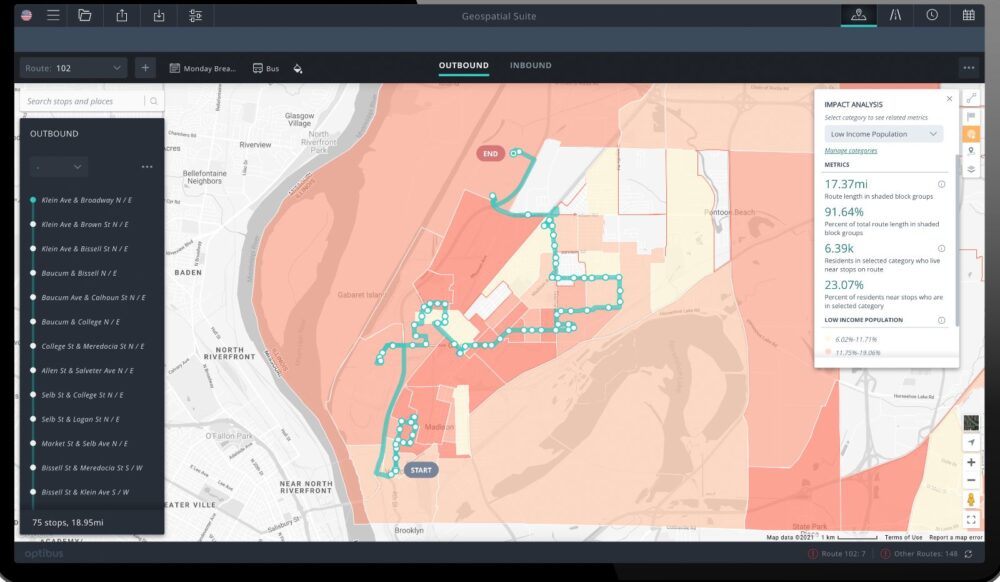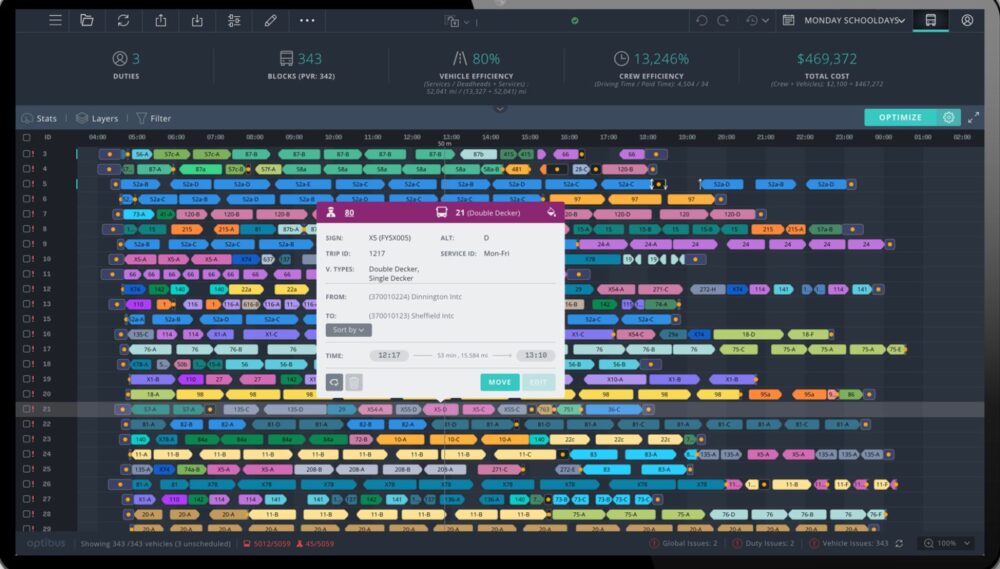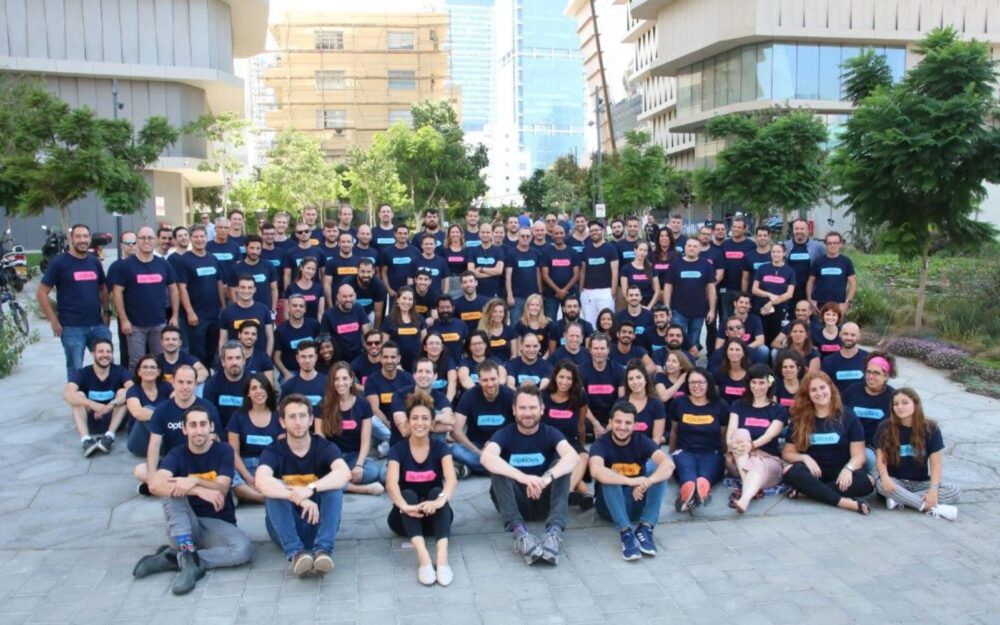Sometimes, the best ideas come up in the shower. But other times, they come up following a conversation with someone who has a problem to solve.
The latter is the case when it comes to Optibus, an Israeli startup providing AI-based solutions to optimize public transportation.
“The original idea came from my father. He was, and still is, the CFO of one of the largest public transit companies in Israel,” says Optibus cofounder and CEO Amos Haggiag.
“He was telling me of the inefficiencies of transit planning and how people are making what he thinks are suboptimal decisions,” he explains. “Decisions are being based on people’s experience and not optimization or AI.
“He was telling me, ‘You’re studying math and computer science, maybe you can solve the problem.’”
Haggiag took up the challenge. He and his university friend-turned-Optibus CTOEitan Yanovsky founded the Tel Aviv-based company in 2014, after a few years of learning about the field.

“We were at first really interested in the math aspect of the problem because it’s how to optimize supply with demand in a large-scale problem like a city or an entire country,” Haggiag notes. “It’s a very complicated problem and a very challenging mathematical problem.
“We started experimenting with data that we got from different companies in Israel, who were all really happy to share with us their data and feedback, and within time we began developing algorithms and a product.”
Since then, Optibus has raised a total of $160 million and has gone on to power transit planning and operations in almost 500 cities around the world.
How does Optibus work?
“It starts with the planning, where the bus will go, where the stops will be located,” Haggiag explains.
This means configuring the number of routes, their direction, the timetables and the frequencies based on ridership.
“The second step will be the resource allocation,” he adds. “You need to think about how many vehicles you need and what type.
“Then you also work with all the driver-related aspects – when will they come to work, how much they get paid when do they get a break.”

After the planning is done, it’s time to move on to operations, i.e. how to handle daily bumps such as sick drivers or traffic jams.
The system, Haggiag emphasizes, touches on all aspects of keeping public transit running smoothly and taking a load off people who used to have to do it in pen and paper or Excel.
“This really replaced very manual decisions that are not based on data,” he says. “It’s very hard for a human being to make decisions on a city-wide scale. It’s really hard to do it without something automatic. That’s the main innovation that we’re bringing to the field.”
Optibus allows them to enter different parameters and optimize the network automatically with advanced technology, he notes.

Impact of Covid
Given that the vast majority of the people in the world don’t have a private car, the coronavirus crisis really showed how important a solution like Optibus is, Haggiag says.
“Public transit was heavily impacted negatively by Covid, because social distancing and public transportation don’t go well together,” he notes.
“The impact is definitelynegativefor the industry, but for Optibus the impact was opposite. We had one of the best years in 2020 because Optibus became a viable product especially for this situation,” he explains.
“With Covid, you need to cancel routes, limit passengers, open and reopen school bus routes. It becomes very dynamic transportation, which public transport agencies are not used to dealing with. Optibus is a great tool to drastically change from day to day.”

Looking forward, plans for the company are threefold.
“First, we’re expanding all over Europe, Latin America, the US – where we’re already quite advanced – APAC and Africa. Second, we’re investing in the product and creating new products: real-time aspects of public transportation, not just planning side,” says Haggiag.
Regarding the issue of electric mobility, he says Optibus invested in making its product EV ready early on. This means configuring where to charge buses, how long to charge them and similar decisions that people won’t have to make on their own.
“Our system automatically makes all these decisions, based on what is optimal,” he says.
For more information, click here

















